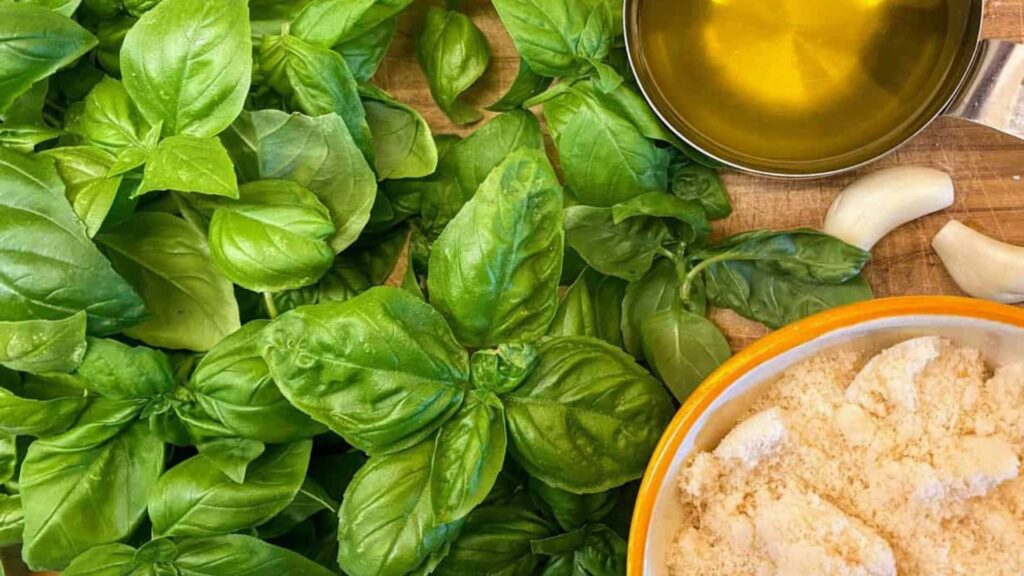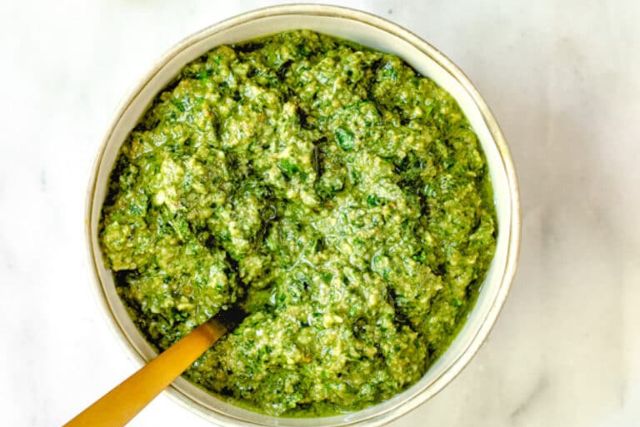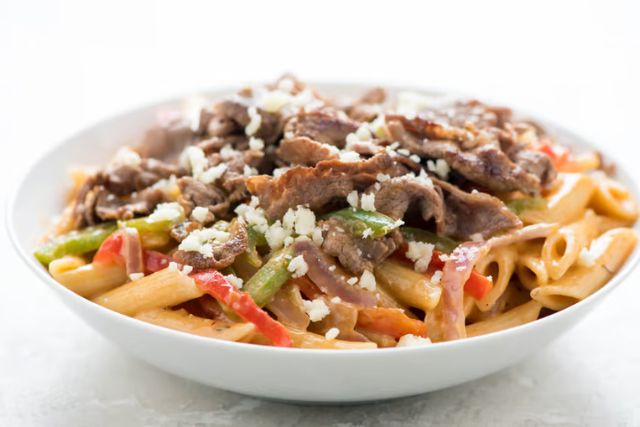Rich Walnut Pesto Recipe : Step-by-Step Guide to Nutty Italian Sauce
Explore the delightful world of walnut pesto with our comprehensive recipe guide. Walnut pesto offers a rich and nutty twist on the classic Italian Tomato sauce, perfect for enhancing pasta dishes, spreading on sandwiches, or adding flair to appetizers. In this article, we delve into the nuances of creating this flavorful sauce, blending toasted walnuts with fresh basil, Parmesan cheese, and olive oil to achieve a creamy, aromatic pesto that promises to elevate your culinary creations. Whether you’re a novice in the kitchen or a seasoned chef, mastering this walnut pesto recipe will add depth and richness to your repertoire of homemade sauces.
Unveiling the Origins of Walnut Pesto Recipe
Pesto, in its traditional form, traces its roots to Genoa, Italy, where it originated as “pesto alla genovese.” This classic sauce is primarily made with fresh basil, pine nuts, garlic, Parmesan cheese, and olive oil, blended into a smooth paste. Over time, variations such as walnut pesto have emerged, offering a twist on the original recipe by incorporating walnuts as the primary nut component. The addition of walnuts not only enhances the sauce’s texture but also imparts a deeper, nuttier flavor that complements a wide range of dishes.
The Nutritional Benefits of Walnut Pesto Recipe
Walnuts are renowned for their nutritional profile, making walnut pesto not only a flavorful addition to meals but also a healthy one. Walnuts are rich in omega-3 fatty acids, antioxidants, and essential minerals like magnesium and phosphorus. They contribute to heart health, brain function, and overall well-being. When combined with fresh herbs, olive oil, and Parmesan cheese in walnut pesto Recipe, these ingredients create a sauce that not only enhances the taste of dishes but also provides valuable nutrients.
Essential Ingredients for Walnut Pesto Recipe

To prepare a delicious walnut pesto Recipe, gather the following essential ingredients:
- Walnuts: Use raw, unsalted walnuts for the best flavor and texture.
- Fresh Basil: Provides the herbaceous base and bright green color characteristic of pesto.
- Garlic: Adds a pungent, savory note to the sauce.
- Parmesan Cheese: Use freshly grated Parmesan for its nutty flavor and creamy texture.
- Extra Virgin Olive Oil: Binds the ingredients together and adds richness.
- Lemon Juice: Fresh lemon juice enhances the flavors and brightens the sauce.
- Salt and Pepper: To season and balance the flavors.
Step-by-Step Walnut Pesto Recipe
Ingredients:
- 1 cup walnuts, raw and unsalted
- 2 cups fresh basil leaves, packed
- 2 cloves garlic, peeled
- 1/2 cup freshly grated Parmesan cheese
- 1/2 cup extra virgin olive oil
- 1 tablespoon fresh lemon juice
- Salt and freshly ground black pepper to taste
Instructions:
- Toast the Walnuts: Heat a dry skillet over medium heat and toast the walnuts for 3-5 minutes, stirring frequently, until fragrant. Remove from heat and let cool.
- Blend Ingredients: In a food processor or blender, combine the toasted walnuts, fresh basil leaves, garlic cloves, and Parmesan cheese. Pulse until coarsely chopped.
- Add Olive Oil and Lemon Juice: With the food processor running, slowly drizzle in the olive oil and lemon juice until the pesto reaches your desired consistency. You may need to stop and scrape down the sides of the processor bowl with a spatula.
- Season to Taste: Add salt and freshly ground black pepper to taste. Pulse briefly to combine.
- Store or Serve: Transfer the walnut pesto to a jar or airtight container. Use immediately or store in the refrigerator for up to one week. For longer storage, freeze in ice cube trays and then transfer to a freezer bag.
Tips for Perfecting Your Walnut Pesto Recipe
- Quality of Ingredients: Use fresh, high-quality ingredients for the best flavor. Fresh basil and good quality olive oil and Parmesan cheese will elevate your walnut pesto.
- Texture Control: Adjust the amount of olive oil to achieve your preferred texture—thicker for spreading on bread or thinner for tossing with pasta.
- Variations: Experiment with adding other herbs like parsley or cilantro for a unique twist. You can also incorporate sun-dried tomatoes or roasted red peppers for added depth of flavor.
Serving Suggestions for Walnut Pesto Recipe
- Pasta: Toss walnut pesto with cooked pasta and a splash of pasta water for a quick and flavorful meal.
- Sandwiches: Spread walnut pesto on sandwiches or wraps for a delicious alternative to mayonnaise or mustard.
- Salads: Use walnut pesto as a dressing for salads, roasted vegetables, or grain bowls.
- Dips and Spreads: Serve walnut pesto as a dip for crudites or as a spread on crostini or crackers.
Walnut pesto is a delightful variation on the classic Italian sauce, offering a nutty richness and versatility that enhances a wide range of dishes. By mastering this walnut pesto recipe, you not only elevate your culinary skills but also infuse your meals with the wholesome goodness of walnuts and fresh herbs. Whether tossed with pasta, spread on sandwiches, or used as a dip, walnut pesto promises to delight your taste buds and nourish your body. Embrace the flavors of Italy and enjoy the culinary journey of creating your perfect walnut pesto.
Frequently Asked Questions (FAQs) about Walnut Pesto Recipe
What are the key differences between traditional pesto and walnut pesto?
Traditional pesto, such as pesto alla genovese, typically uses pine nuts as the primary nut ingredient, along with fresh basil, Parmesan cheese, garlic, and olive oil. In contrast, walnut pesto substitutes walnuts for pine nuts, imparting a richer, nuttier flavor profile to the sauce.
Is walnut pesto suitable for those with nut allergies?
No, walnut pesto is not suitable for individuals with nut allergies as it contains walnuts, which are tree nuts. For those with allergies, alternative pesto recipes using seeds like sunflower seeds or pumpkin seeds can be considered.
Can I make walnut pesto ahead of time and how should I store it?
Yes, walnut pesto can be made ahead of time and stored for later use. Store it in an airtight container in the refrigerator for up to one week. For longer storage, freeze walnut pesto in ice cube trays and transfer the frozen cubes to a freezer bag for up to three months. Thaw in the refrigerator before use.
What are some variations of walnut pesto?
There are several variations of walnut pesto to explore:
Basil and Walnut Pesto: Traditional with fresh basil.
Spinach and Walnut Pesto: Substitutes basil with spinach for a milder flavor.
Arugula and Walnut Pesto: Adds a peppery kick with arugula.
Roasted Red Pepper Walnut Pesto: Incorporates roasted red peppers for sweetness and depth.
Sundried Tomato Walnut Pesto: Combines tangy sundried tomatoes with walnuts for a savory twist.
How can I use walnut pesto besides pasta?
Walnut pesto is incredibly versatile:
1) Spread on sandwiches or wraps instead of mayonnaise.
2) Use as a dip for crudites or breadsticks.
3) Toss with roasted vegetables before serving.
4) Mix into mashed potatoes for added flavor.
5) Drizzle over grilled meats or seafood as a finishing sauce.






